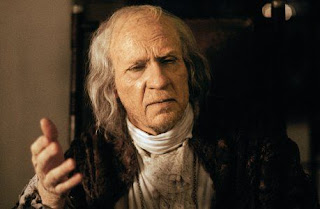Like many of you, I often find solace from the cold, hard world in the flickering of an old movie, so to insure that you start 2017 off right, here are my Top 5 Films I Saw in 2016:
The Boys in the Band (1970)
For years I had been hearing about this movie. Whether lauded or reviled, Boys is seen as a landmark in gay film history. Adapted from the stageplay, it chronicles the goings-on in a New York apartment when a group of gay friends gather together to celebrate a birthday. Like an all-gay Who's Afraid of Virginia Woolf, booze and pot cause the party to spiral out-of-control, and when an old friend of the host's shows up, secrets (and the host) come out.
This may not sound like much of a plot now, but in 1970, gay issues were just starting to be discussed in national forums. The Stonewall Riots of 1968 ignited a public movement and gays and lesbians were not going to be quiet anymore. Boys works so well because while that spirit of revolution is evident in the film, the underbelly of shame and masculine overcompensation are still there- reminding us that coming out of the closet is only the first step in a long march to equality and acceptance from others and ourselves.
While some have been critical of the gay stereotypes and the fetishization of gay life as tragedy portrayed in the film, (director William Friedkin would court gay controversy again in his movie Cruising (1980)), I was surprised how timely this film felt. Issues of femininity, self-loathing, and how to define gay couples are still active debates in our culture.
I've heard scathing ripostes about looks and love like the ones between Michael and Donald at many a party from people who weren't even alive when the film came out. This movie could be made today, and with a cast that would include Matt Bomer, Neil Patrick Harris, Jim Parsons, Chris Colfer, Tituss Burgess and Drew Droege, people would go see it.
The only thing absent is the haunting presence of AIDS, which wouldn't make national headlines for another ten years. Five of the original cast members would succumb to the dreaded disease, however- a bitter reminder how AIDS would shape the gay community for decades to come.
We Need to Talk About Kevin (2011)
When Tilda Swinton isn't in a fight with Maragret Cho about Asian invisibility in Hollywood, she is one of the most interesting actresses in film today. Like a more punk version of Cate Blanchett, Swinton adds beautiful complexity to her roles making us feel the emotional immediacy of her characters' dilemmas. Swinton's dilemma in Kevin is gut-wrenching and everytime some jackass commits some heinous act of barbarity in the world, I think of this film and Swinton's desperate, empty gaze.
I wrote about Kevin after recuperating from the flu, but I've never recovered from this movie.
Repulsion (1965)
If you're thinking of staying in alone this New Year's, read my review of Repulsion and get out of your apartment before the walls start sprouting arms. Roman Polanski is a master of psychological horror, and Repulsion set the stage for his later masterwork on women losing it in apartments, Rosemary's Baby (1968).
Two for the Road (1967)
New Year's is all about the passage of time, and no film handles time and our memory of it quite like Two for the Road. Many people like this movie for its refreshing leads Albert Finney and Audrey Hepburn, but I was really taken away by director Stanley Donen's editing, which made the concept of life seem so fleeting and circular. It's important in these times to remember a life is more than just this moment- so instead of dreading Trump's next tweet, read my review of Two for the Road.
Madame Satan (1930)
This New Year's I hope you have a great party full of friends and wine and little nibbly bits- but I guarantee no matter how fabulous your party, it won't compare with the dirigible masquerade party in Cecil B. DeMille's Madame Satan. I can't stop thinking of the sheer decadence and visual over-stimulation of the last half of this movie. It's like an Adrian costume collection disaster movie. What better way to ring out the old than by pushing it out of a blimp?
To all my Lance's Werthwhile readers, I wish you the most movie-filled 2017!


















































